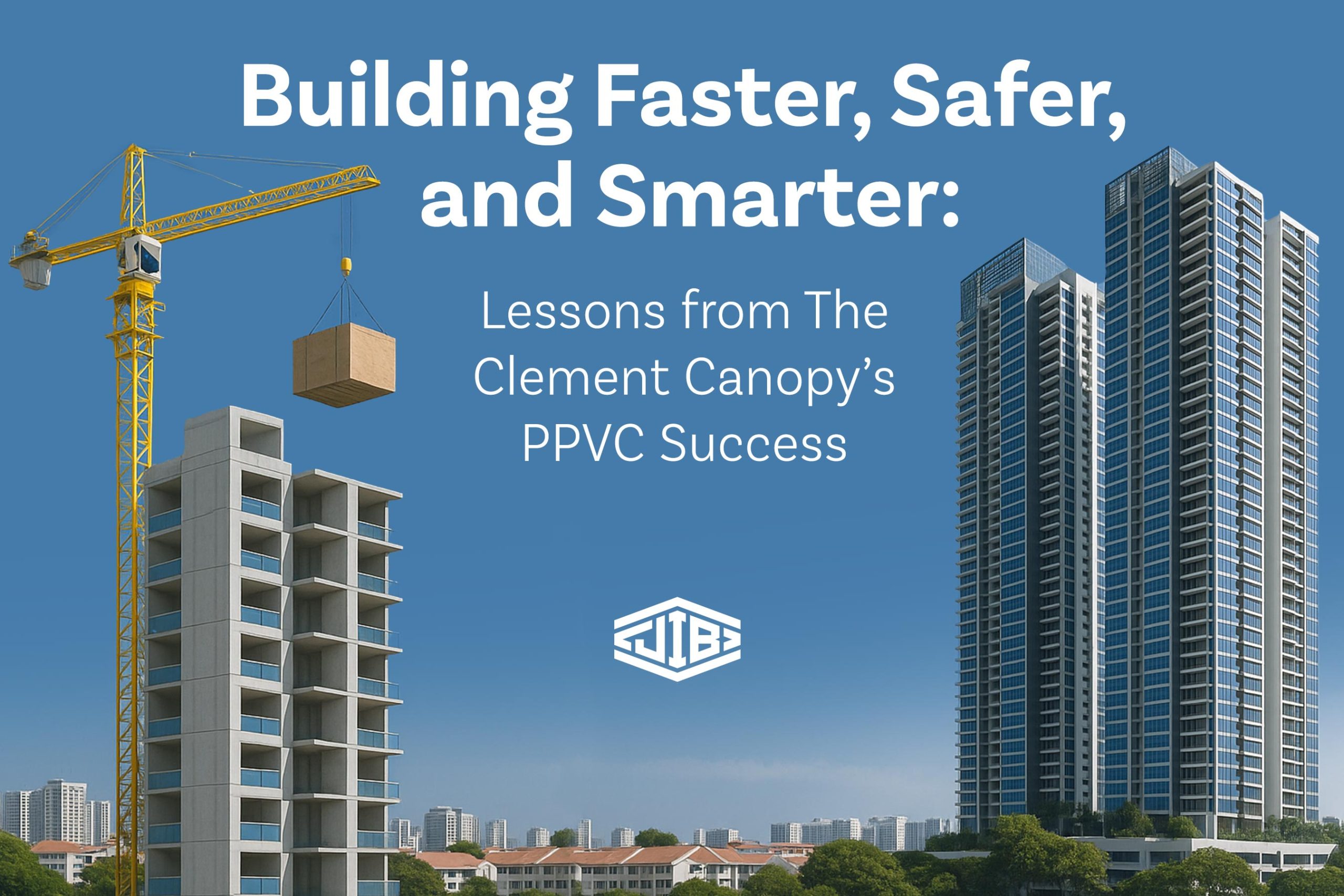When you think of a 40-storey condo tower, the image that likely comes to mind is months of scaffolding, pouring concrete floor by floor, and workers swarming the site in every weather condition imaginable.
Now imagine this: fully finished apartment modules, walls, plumbing, fixtures, even paint–rolled in on trucks and hoisted into place like Lego bricks. That’s exactly what happened at The Clement Canopy in Singapore, one of the world’s most ambitious applications of Prefabricated Prefinished Volumetric Construction (PPVC).
Completed in 2019, this private residential project used 1,866 volumetric modules to build two 40-storey towers, each rising 140 metres. And while the building itself is impressive, the real story lies in how it was built, and what it means for the future of construction.
Why Clement Canopy Matters
Led by Dragages Singapore, part of the Bouygues Construction group, the Clement Canopy marked a global first: the tallest completed building constructed using concrete PPVC modules. Each module was a six-sided, fully finished unit, think living rooms, bedrooms, and bathrooms. All built off-site in controlled conditions, then transported and installed on-site at a rate of 10–12 modules per day.
That speed translated into a major productivity gain: the construction team averaged one floor per week, far outpacing conventional high-rise timelines. The project demonstrated not only the viability of PPVC at scale but also its potential for:
- Higher quality (thanks to factory precision)
- Greater site safety (with less work at height)
- Reduced neighborhood disruption (less dust, noise, and traffic)
- A faster path to occupancy and ROI
The Jib Perspective
At Jib, we talk a lot about building smarter, not just greener, but leaner, faster, and with fewer trade-offs. The Clement Canopy encapsulates that shift in mindset. It’s proof that prefab doesn’t mean basic. It means better coordinated, better controlled, and increasingly, better designed.
As offsite methods like PPVC gain traction across Asia and beyond, North American markets have much to learn from these pioneers. For builders, developers, and policymakers, projects like Clement Canopy offer a clear blueprint for addressing labour shortages, productivity plateaus, and rising urban demands.
Watch the Process
Curious how a 30-tonne module gets installed 40 stories up?
🎥 Watch the time-lapse video by Dragages Singapore
📘 Read the full case study from Building and Construction Authority Singapore (BCA)
What’s Next?
The Clement Canopy helped pave the way for even taller modular towers, like Avenue South Residence (56 storeys) also in Singapore. And with increasing pressure to decarbonize, modular techniques like PPVC are a natural fit for low-waste, high-efficiency construction pipelines.
As advocates for better building practices, we’ll continue spotlighting global leaders who push boundaries and raise the bar. Because in our view, the future of construction isn’t just modular, it’s meaningful.
Wondering how storytelling and smart marketing can advance offsite construction, mass timber, and sustainability in North America?
Whether you’re in AEC, sustainability, or shaping the built environment, we’d love to connect. Let’s talk – or explore BuildBetter.Marketing.
Structure needs story. Jib delivers.











